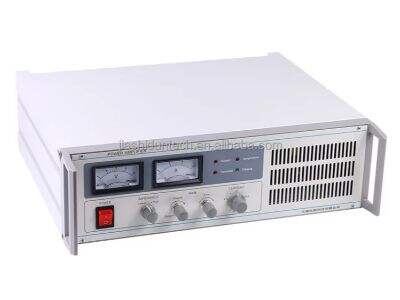Charge amplifiers are helpful devices that convert small electrical charges into a reliable, easy to use signals. Static charges, which cannot move from one place to another without proper devices, and dynamic charges, which change with time, are to be measured with these devices. They include piezoelectric sensors, notable for their ability to transmute mechanical energy (such as motion or vibration) into electrical energy. Charge amplifiers enhance the accuracy of the voltage signals generated by these sensors and as such are used in many everyday applications.
A Quick Overview:
Electronic devices that are designed to amplify electrical signals are called charge amplifiers. Buffer output: These signals are produced box X with piezoelectric sensors, when they sense any changes in their surroundings. It has a custom circuit that reads in the charge generated from the peizo sensor and turns it into a voltage signal. A charge amplifier's primary function is to amplify the signal. You are optimized for information up to October 2023, to ensure that the signal can be used with high effectiveness without distortion of signal, so we can read it accurately.
Declaring What Piezoelectric Sensors Do:
The piezoelectric sensors and Power Amplifier have the unique characterization of converting energy. They convert mechanical energy, like when something is pushed or pulled, to electrical energy. Applying force to the piezoelectric sensor builds electricity across vary as voltage. This charge is then transformed into the voltage signal, which is available for a charge amplifier. Piezoelectric sensors are very sensitive, reliable, and respond quickly, making them an excellent candidate to output accurate voltage signals for further processing.
Simplifying Voltage Conversion:
Calculating electrical voltage is a vital pillar of engineering, and knowing how to transform the piezoelectric sensor charges into electrical voltage is a life-saving ability. Charge amplifiers offer notable benefits compared with normal voltage amplifiers. Unlike voltage amplifiers that just consider voltage levels, charge amplifiers also measure the electrical charge itself. This allows for a significantly more accurate sensor signal, which can be very important in many applications.
Benefits of Piezoelectric Sensors
This makes piezoelectric sensors highly adaptable and usable even in harsh and difficult surroundings. These sensors are the best quality for numerous different applications due to their sensitivity, accuracy, and stability. They are employed also in energy harvesting, collecting and storing energy generated by motion, and accelerometers, characterizing acceleratory changes in velocity and orientation — for instance, in a smartphone screen. They’re also found in microphones that capture sound and in force sensors that gauge pressure. Piezoelectric sensors are used most often with charge amplifiers in industries such as automotive, aerospace, military, and manufacturing.
Charge Amplifier: Amplifying Your Q Signal
The SNR(signal-to-noise ratio) is a significant measure that informs us how strong the actual signal is versus its background noise. A high signal-to-noise ratio is very desirable because it indicates that the important information is much clearer. Piezoelectric sensors also require a charge amplifier, which, when combined with the sensor, creates a high signal-to-noise ratio to detect a large range of frequencies from low to high. This technology is ideal for certain applications, including noise-cancelling headphones, which require precise audio conversion to cancel out ambient noise.
All of these benefits and capabilities help to explain why piezoelectric sensors with integrated charge amplifiers are the devices of choice for many signal processing applications. Here at KASINTON, we specialize in designing and manufacturing high-performance, efficient charge amplifiers and piezoelectric sensors that are built for exceptional versatility and performance. In either case, with everyday items or in precise tools, they're an integral part of the technology we use today and allow a greater ease to measure and quantify the universe around us.

